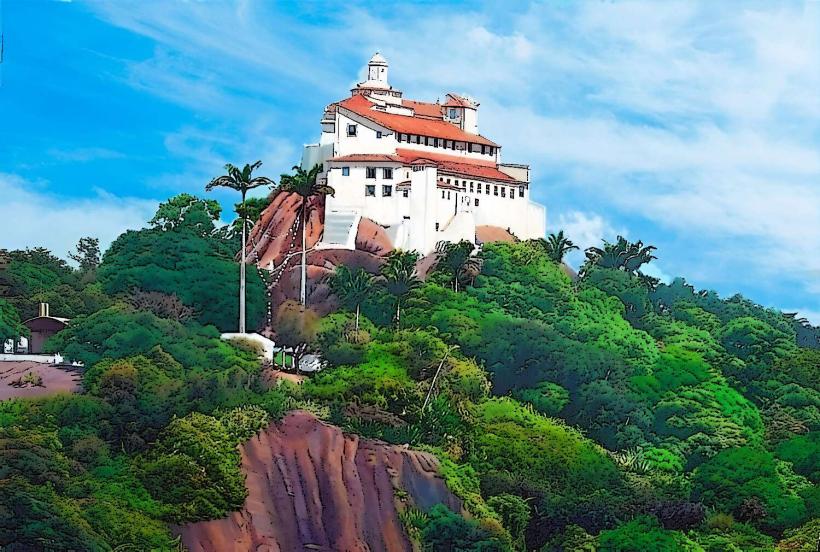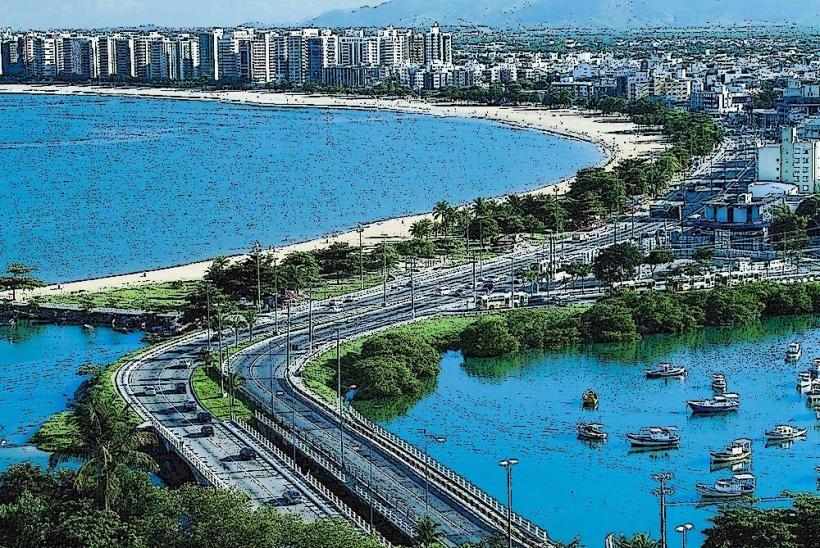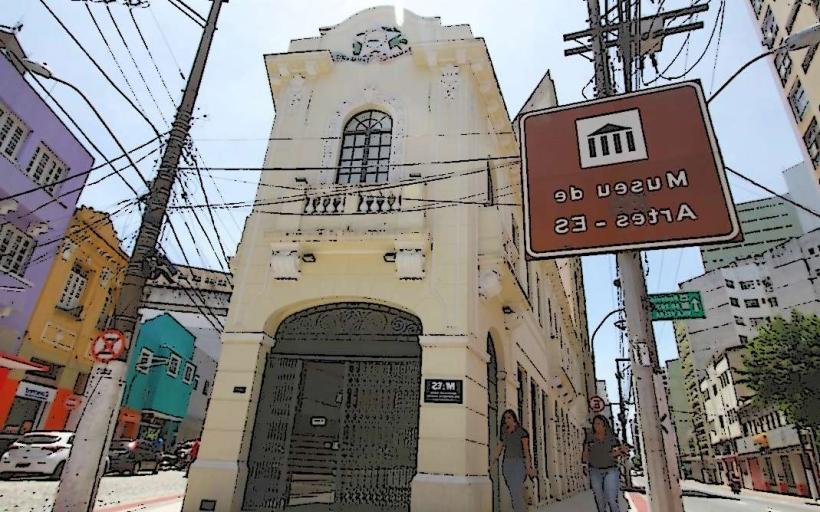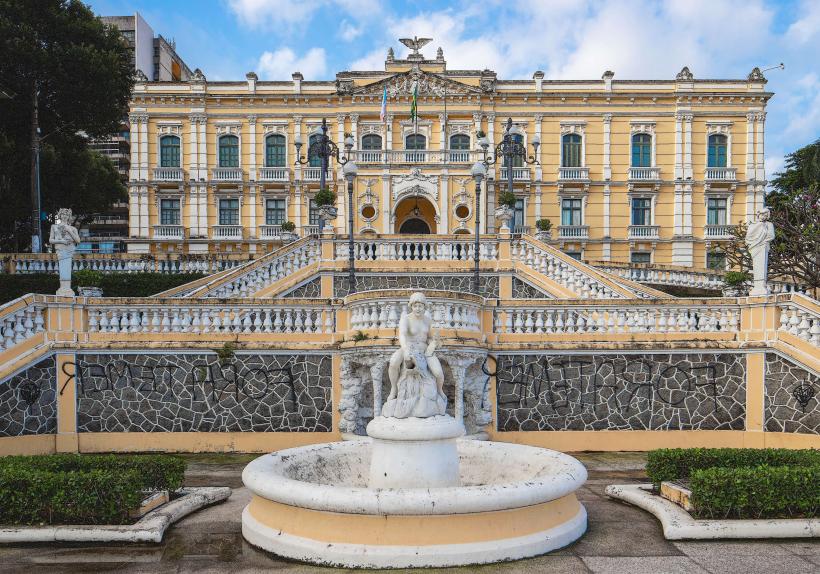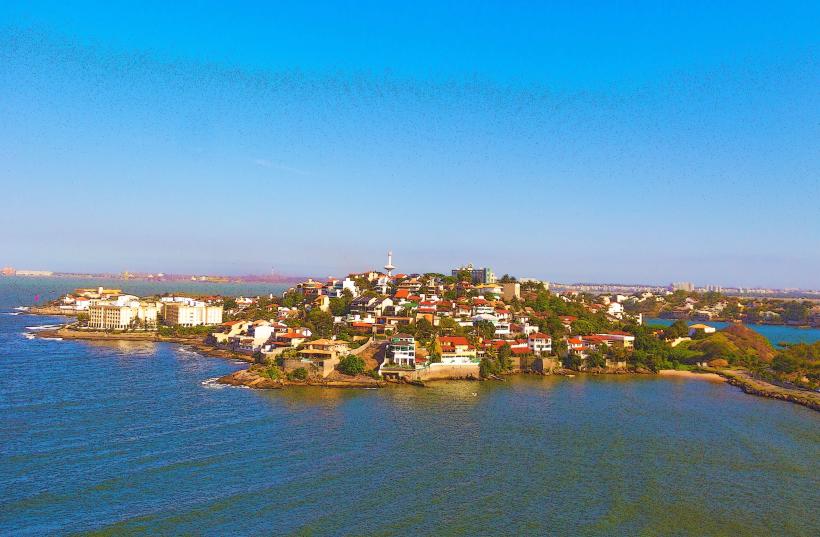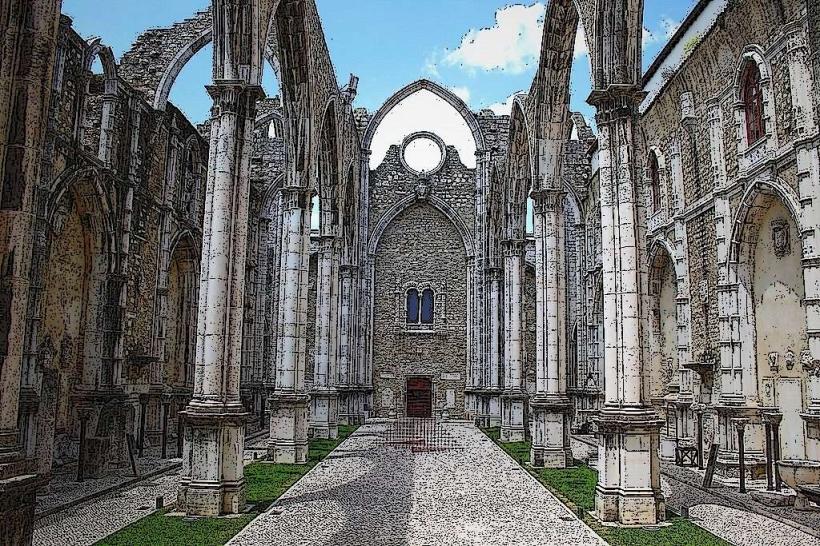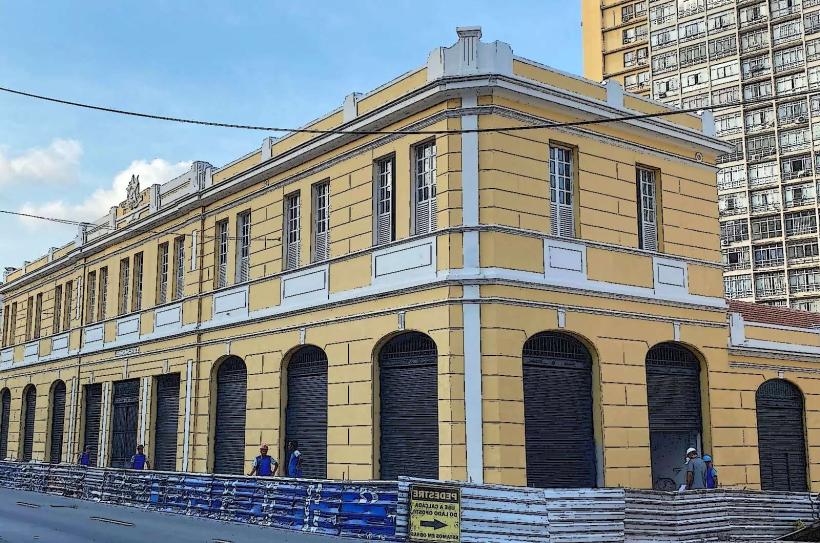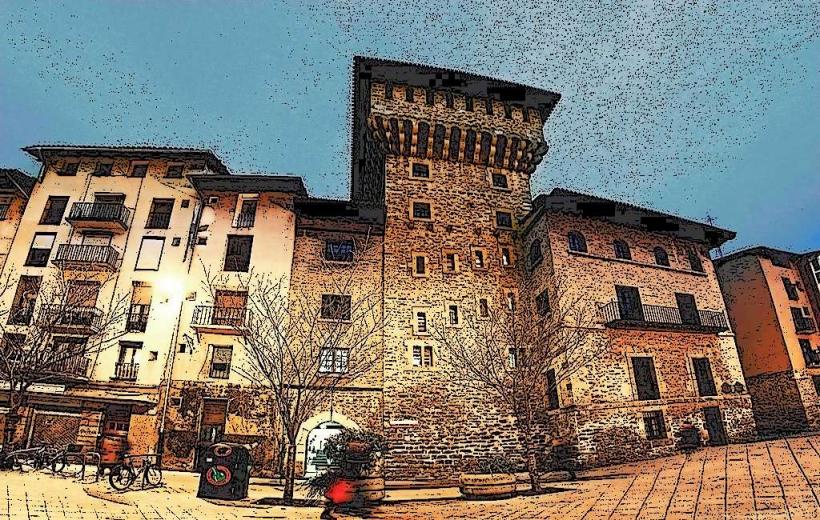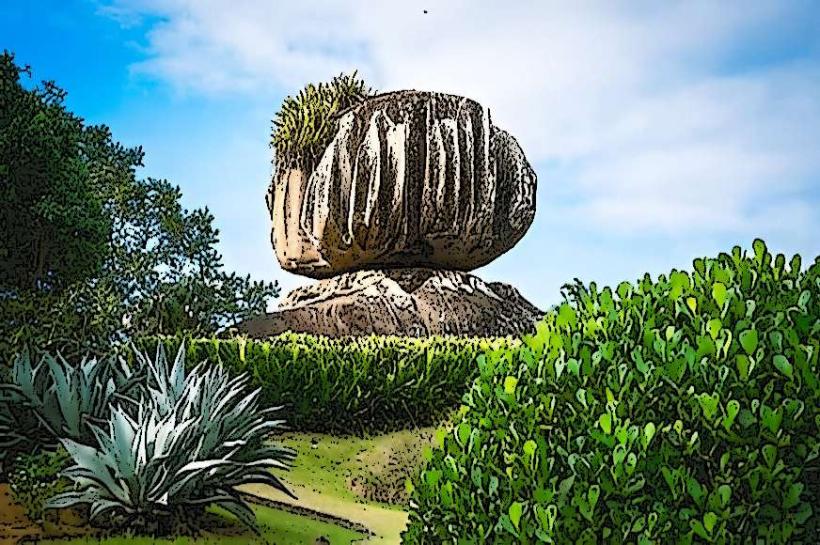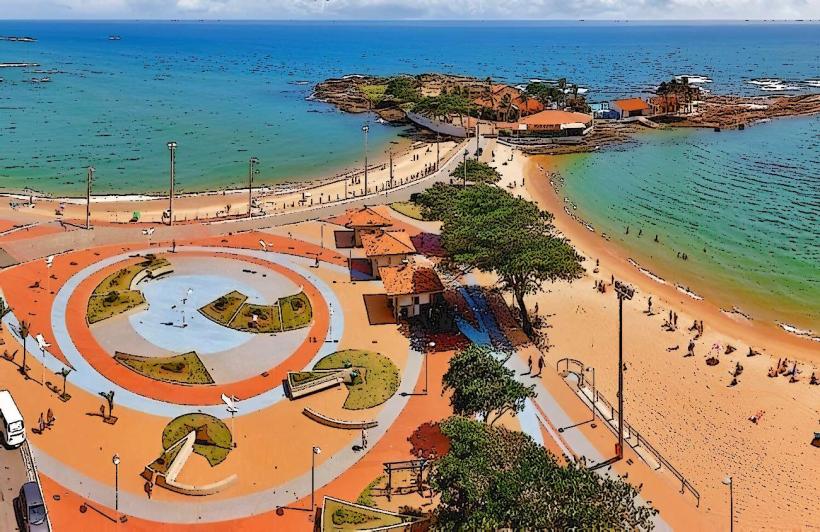Information
City: VitoriaCountry: Brazil
Continent: South America
Vitoria, Brazil, South America
Overview
Vitória, the capital of Espírito Santo, sits on Brazil’s southeastern coast, where the sea glints bright under the morning sun.Vitória may be one of Brazil’s smaller capitals, but its dazzling shoreline, lively arts scene, and economic buzz give it a rare blend of city energy and seaside calm, with fishing boats rocking gently in the bay.The city bustles as a major port, its docks lined with cargo ships, and serves as a key hub for industry, commerce, and tourism in the region.Vitória is home to about 365,000 people, yet its metropolitan area-stretching into nearby towns-swells to roughly 1.7 million, enough to pack a stadium many times over.Though it’s one of the smallest state capitals, its population is growing and full of variety-a mix you can hear in the chatter at the Saturday farmers’ market.Vitória’s people carry a blend of cultures-shaped by Portuguese colonization, African roots, and waves of immigrants from Italy, Germany, and Lebanon-like the mingled scents of coffee and fresh bread drifting through its streets.Afro-Brazilian traditions shape the city’s heartbeat, from the drumbeats echoing at street festivals to the spices sizzling in kitchens and the rhythms woven into its music.Like many Brazilian cities, Vitória has swelled as people from rural towns and other states-especially the Northeast-arrive chasing jobs and a better life, some stepping off the bus with nothing but a small suitcase in hand.Vitória plays a major role in the region’s economy, driven by industries ranging from oil and steel to bustling shipping docks and sunny beachside tourism.Vitória, a bustling port city, hosts one of Brazil’s largest harbors-the Port of Vitória-where massive ships load iron ore, coffee, and steel bound for markets around the world.The port doubles as a busy hub for global trade, sending and receiving goods to and from Europe and Asia, from Italian olive oil to Japanese electronics.Oil and Gas: Espírito Santo holds sizable oil reserves, and in Vitória, tankers and rigs keep the city humming at the heart of the state’s oil industry.The city runs on oil refineries, offshore drilling, and a busy logistics network that keeps the energy sector moving, from tanker trucks rumbling down the docks to ships loading under the smell of diesel.In Vitória, steel mills hum alongside metallurgical plants, their work fueling a large share of the city’s economy.ArcelorMittal and other companies run operations here, sending up plumes of steam and giving the city’s industrial profile a solid lift.Tourism: Vitória may not share the fame of Rio de Janeiro or Salvador, but it draws visitors with its golden beaches, scattered islands, and lush natural parks just beyond the city.Tourism is on the rise, especially among locals eager to hike forest trails and take in the region’s sweeping views.Commerce: The city’s service and retail scene is on the rise, with busy malls, buzzing cafés, and shops that serve both locals and the steady stream of visitors.In Vitória, you can travel in by plane, ship, or car with ease, but rush-hour traffic can crawl and buses don’t always run where you need them.You can fly from Vitória’s Eurico de Aguiar Salles Airport (VIX) to major Brazilian cities like São Paulo, Rio de Janeiro, and Brasília, with jets lifting off under the bright Atlantic sun.The airport recently expanded to handle more travelers and boost connections, adding a few international flights that now hum with early-morning boarding calls.The Port of Vitória serves as a key gateway for goods leaving Espírito Santo, and within it, the vast Port of Tubarão-where endless stacks of red-brown iron ore wait to be loaded-ranks among the world’s largest iron ore export terminals.In Vitória, the bus network winds through the city, linking one neighborhood to the next, from quiet tree-lined streets to the bustling downtown.Public transportation is there if you need it, but buses and trains are often packed shoulder to shoulder, and people worry they won’t run on time.The city’s exploring new ways to get around, from fresh-painted bike lanes to handy transportation apps on your phone.By road, Vitória links to the rest of Brazil through the BR-101, a major coastal highway where trucks rumble past ocean views.This highway links Espírito Santo, Rio de Janeiro, and Bahia, carrying trucks loaded with goods and travelers heading north or south.Still, traffic often slows to a crawl during rush hour, with brake lights stretching in a red line down the street.In Vitória, the real estate market ranges from modest apartments with tiled balconies to high-end waterfront homes, shaped by the city’s rising population and steady economic growth.Urban Development: In recent years, the city’s seen waves of gentrification, especially in Praia do Canto, Jardim da Penha, and Centro, where old corner cafés now share the street with sleek glass-front boutiques.In these neighborhoods, you’ll find sleek modern apartments, quiet gated streets, and lively corners with shops and cafés.Coastal Properties: With their sweeping ocean views, beachfront homes in spots like Curva da Jurema and Camburi often come with a steep price tag.More people want these properties as the city’s buzz grows, drawing visitors for its lively streets and long, sunlit afternoons.Affordable housing is still within reach in neighborhoods like Serra and Cariacica, where lower-income families make their homes and kids play in narrow, sunlit streets away from the pricier central districts.As the city keeps growing, these neighborhoods are slowly stretching outward, with new buildings rising where empty lots once stood.In Vitória, culture and the arts thrive, blending rhythms from African drums, indigenous traditions, and colonial heritage with bold, modern creativity.In Vitória, people groove to samba, funk, and MPB-the Brazilian pop sound that drifts from cafés and beachside bars.The city bursts with musical variety, from the sweep of a live orchestra to the pulsing beats of late-night electronic shows.Carnival and the Festa de Nossa Senhora da Penha are vibrant cultural highlights, alive with the pulse of frevo, samba, and axé drifting through the crowded streets.Vitória comes alive with annual celebrations, the most beloved being the Festa de Nossa Senhora da Penha, where locals gather to honor the city’s patron saint with music, prayer, and streets lined with bright banners.Vitória’s Carnival may not draw the same fame as Rio or Salvador, but it still bursts with color and rhythm, filling the streets with parades and the beat of samba drums.Art and Crafts: The city buzzes with galleries and exhibitions that showcase bold contemporary pieces, intricate indigenous crafts, and the rich textures of local traditions.The Museu de Arte do Espírito Santo (MAES) stands out as a key hub for culture, much like other places where paintings hang in bright galleries and skilled hands shape intricate crafts.Cultural Heritage: Vitória’s colonial-era landmarks, from the stately Palácio Anchieta to the soaring towers of the Catedral Metropolitana, tell the story of the city’s rich past.These old stone structures help anchor the city’s tourism, attracting travelers eager to wander its narrow streets and uncover its cultural legacy.Vitória is home to several universities and colleges, shaping its academic scene and feeding the local economy with skilled graduates fresh from lecture halls and lab benches.In Espírito Santo, the Federal University of Espírito Santo (UFES) stands as the state’s leading center for higher learning, with its main campus buzzing with students under the shade of tall jacaranda trees.It offers programs in social sciences, engineering, health sciences, and the humanities, from studying human behavior to designing bridges or analyzing medical data.
Landmarks in vitoria

